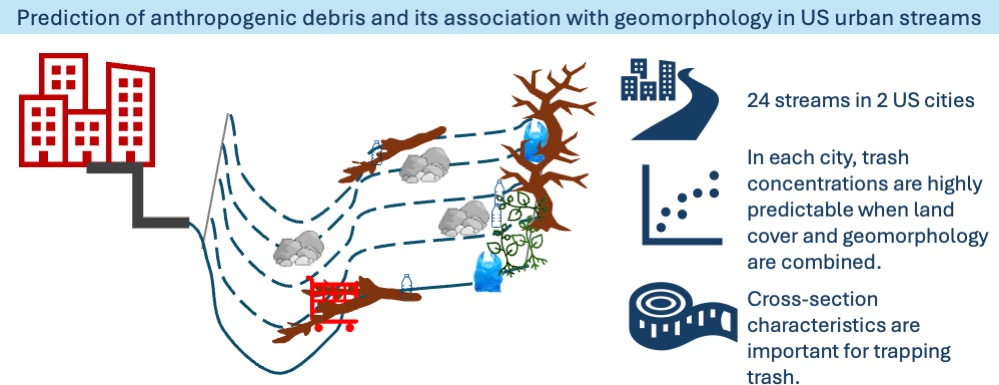New paper! Prediction of anthropogenic debris and its association with geomorphology in US urban streams
If you’ve spent time in or along urban streams, you’ve probably seen trash hanging out in or near the channel. This trash (or anthropogenic debris) can range from plastic bags and bottles to shopping carts and car tires. But some sections of urban streams have more trash than others. We wanted to know how to predict the trashiest parts of urban streams – in order to better understand the causes and consequences of litter in the environment and target clean up efforts.
While it seems logical to point to surrounding human activity as a cause of variable trash concentrations, we hypothesized that channel geomorphology was an important control on where trash accumulates. We found that stream cross-section characteristics were as important – or more important – than land cover at either the catchment scale or within the riparian zone. Specifically, we think that stream bank roughness and vegetation could play vital roles in debris accumulation.
In our data from Charlotte (NC) and Cleveland (OH), we identified different land cover predictors of trash concentration, which we believe highlight varying sources of debris to urban streams. So when we combined data from the two cities, our models are not as strong. But at the single city scale, we can produce incredibly strong multiple linear regression models of trash concentration – explaining 82-94% of the variation in the data.

This work formed the nucleus of Nageen Farooq’s 2024 MS thesis. Thanks to all of the Team Trash students who helped collect and analyze this data. The paper is open access in Science of the Total Environment.
- Farooq, N., Jefferson, A.J., Greising, C., Kearns, K., Muratori, S., Snyder, K. 2025. Prediction of anthropogenic debris and its association with geomorphology in US urban streams. Science of the Total Environment. 975: 179317. doi: 10.1016/j.scitotenv.2025.179317.
